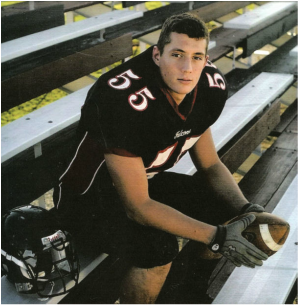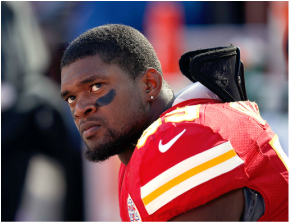The Main Problem
Most athletes know the symptoms of a concussion, but they will refuse to report how they feel to a trainer or coach when experiencing them. So why is that? Many are afraid of losing their position or playing time and when weighing the options are unaware of the danger of playing with a concussion.
Second Impact Syndrome"Second-impact syndrome (SIS), a term coined in 1984, describes the situation in which an individual sustains a second head injury before the symptoms from the first head injury have resolved. The second injury may occur from days to weeks following the first. Loss of consciousness is not a requirement of this condition, the impact may seem relatively mild, and the athlete may appear only dazed initially. However, this second impact causes cerebral edema and herniation, leading to collapse and death within minutes." -Medscape
|
Chronic Traumatic EncephalopathyAccording to the CTE Center at Boston University, "Chronic Traumatic Encephalopathy (CTE) is a progressive degenerative disease of the brain found in athletes (and others) with a history of repetitive brain trauma, including symptomatic concussions as well as asymptomatic subconcussive hits to the head. This trauma triggers progressive degeneration of the brain tissue, including the build-up of an abnormal protein called tau. These changes in the brain can begin months, years, or even decades after the last brain trauma or end of active athletic involvement. The brain degeneration is associated with memory loss, confusion, impaired judgment, impulse control problems, aggression, depression, and, eventually, progressive dementia."
|
Cody Lehe
|
The following is from a report by ABC News: This is Cody Lehe. In 2006 he experienced a headache following a helmet-to-helmet hit in a high school football game It was so bad that he asked his mother to take him to the doctor. His CT scan a few days later came back normal, and he decided to go to practice the day after. At practice Cody took a shoulder hit and became a victim of Second Impact Syndrome. His teammates thought he was having a seizure, but he was actually falling into a coma, with massive brain swelling and an irregular heartbeat. Cody’s mother said, "I think the biggest thing is we have got to get the kids to understand to listen to their bodies. I think he had this discussion with himself, saying, 'I feel like crap, but my CT scan is fine, so I'll play.” Cody currently lives with his parents outside Lafayette, Ind., where he struggles to recall things that happened hours earlier and can no longer walk on his own.
|
Jovan Belcher
|
This is Jovan Belcher. He played inside linebacker for the Kansas City Chiefs. By late 2012, he was living with his girlfriend and three month old daughter. On Decmber 1st, he came home around 6:30 am and argued with his girlfriend and shot her a total of 9 times as her mother watched. He then drove to the Chief's practice facility and killed himself in front of the Chief’s general manager, head coach, and linebacker coach. An autopsy on Belcher’s brain showed significant signs of CTE and it was discovered that in the months leading up to his death he showed signs of cognitive and neuropsychiatric impairment.
|
For more information on SIS, CTE, or these athletes visit these helpful links:
Copyright © 2016


